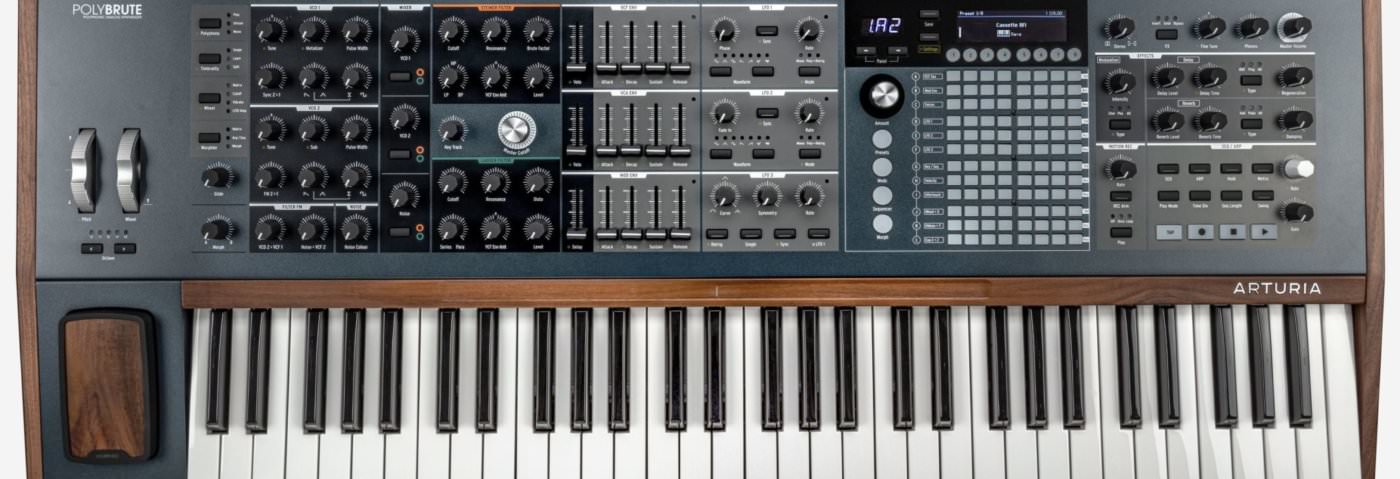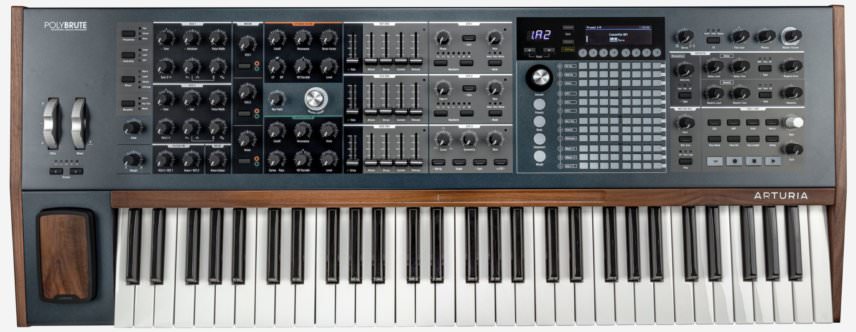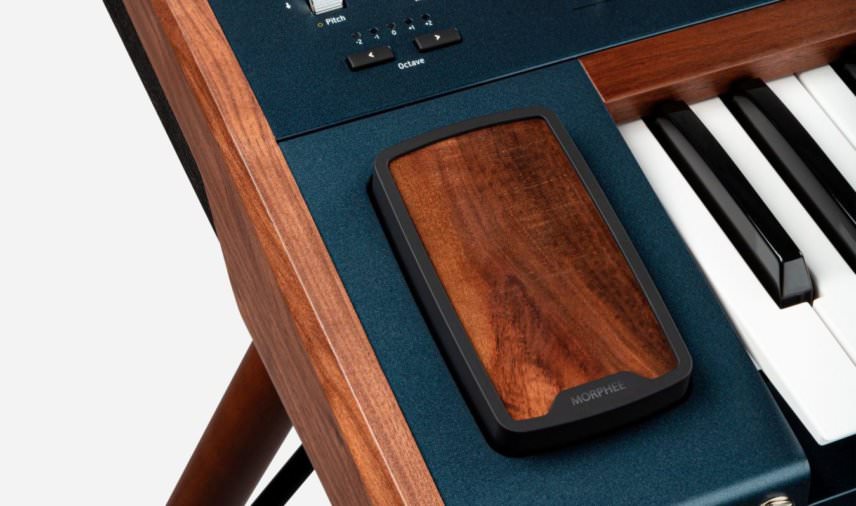The French brand’s follow-up to 2016’s MatrixBrute boasts polyphony, preset morphing and new options for modulation with expression.
Arturia’s first step into analogue synthesis came in 2012 with the release of the MiniBrute. Eight years later, the Brute series now includes an array of analogue monosynths, semi-modulars, drum machines, and the analogue matrix synthesizer, MatrixBrute. With the PolyBrute, Arturia are entering the realm of analogue polyphony and on the company’s 20th anniversary no less.
Some are describing the PolyBrute as a six-voice version of the MatrixBrute and while it is true that many aspects of the design and parameters have been passed down from the latter, there are also numerous new features. The two Brute waveshaping VCO’s remain, as well as the dual VCF setup that provides the option to use the Steiner Parker and Ladder filters in parallel or series.
The button matrix has been condensed into a smaller 12×8 layout and it acts as a patchbay for assigning all sources of modulation to banks of parameters. A mod amount knob allows the user to dial in different levels of modulation in real-time. There’s also a preset browser and a controller for the multi-lane sequencer.
Building on the MatrixBrute’s digitally-controlled signal path, the PolyBrute also has two new touch panels for modulation via expression and a comprehensive morph control. The first touch panel is the long wooden strip positioned above the five-octave keyboard. The second is the expression pad ‘Morphee,’ located to the left of the keyboard. The former can be controlled by sliding your finger left and right while the latter responds to sliding along the X and Y axes as well as pressure.
These two panels highlight the growing trend of expression control that has come about thanks to the popularity of instruments with MIDI Polyphonic Expression (MPE) support.
In Morph mode, the PolyBrute’s Morph parameter allows for blending between two different states of a sound, with the 768 presets coming ready with both an A and B state. The morphing is gradual as opposed to static. This means that, for example, if one was to blend between two states in which Oscillator Two’s tune was +12 in A and -12 in B, there would be audible pitch-bending while tweaking the parameter.
Other notable differences from the MatrixBrute are the effects and I/O sections. Arturia have replaced the analogue effects in the MatrixBrute with Modulation FX, Delay and Reverb based on their software effects collection. Additionally, the I/O section no longer includes CV ins and outs, which is surprising but it underlines the fact that this synth is likely intended to be its own starting and ending point.
The PolyBrute is available for pre-order at a price of €2499, and the first units are scheduled to ship at the end of November.
Find out more at Arturia.



